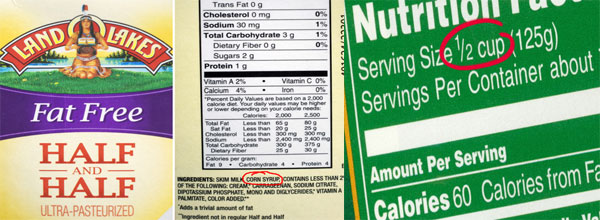Why Are We Overweight?
In the 1980’s something that seemed like a magic pill came out and burst all over the market and everyone thought it was the miracle that we have all been waiting for. Why are we overweight? The answer is…
…Fat Free Labeled Foods
People were all excited about being able to eat foods without fat that they forgot that they still contained calories. So the results? The nation became obese more than ever by eating more because they thought fat free foods were free to eat without gaining weight. They started eating undisciplined and being lazier than ever because they felt no need to burn off fat. Until one day, they wonder when the tire shop showed up.
Fast forward to 2012, obesity costs society $73 billion in lost productivity, meaning showing up for work sick or simply under-performing at work due to physical constraints and inability. According to Natural News online, obesity related medical expenses costs more than $344 billion a year. When you combine that with the loss productivity, that makes it around half a trillion dollars per year that obesity costs us.
What can we do as people who are suffering from this huge cost? Simply educate yourself on nutrition, exercise on a normal basis, and help others understand that same process too. At least that is a good start.
Before we move ahead, I would like to clarify that eating in correct portions is very important as eating too much healthy food as well can cause weight gain. The rule to go by is that a portion is the size of your fist or palm. Use this and control your portions meal by meal and don’t eat till you are full.
Let’s take a look at some foods that advertise as healthy but may not be:
1) Juice – One of the fastest ways to gain weight cause of the sugar. Fiber is left behind when the juice is extracted from the fruit. If you are on a gain weight diet, then this may be beneficial.
2) Enhanced Waters and Flavored Teas – Look at the ingredients first instead of all the engaging words on the front label. Usually it contains high fructose corn syrup, caffeine’s and sugars.
3) Fat Free Cookies – Fat free doesn’t mean calorie free. Usually they have as much if not more sugar than the regular cookies to make up for the taste deficiency. Read the back labels once again
4) Olive Oil – Olive oil is a healthy fat, but it is still a fat. Make sure you don’t overuse or you might as well be using the bad stuff.
5) Low Carb Beer – Some brands market “LITE” and “LOW CARB” beers so we think we can have a 6 pack with no problem or effect on your results. However, the USDA defines low calorie as a food that has no more than 40 calories per serving. A serving of low carb beer contains 90-100 calories per serving. Trust me, I was a bartender for 16 years.
I am proud to say that after being good at appreciating the spirits for some time and really supporting the Island of Islay cause I love Lagavulin, I have been free of any spirit for the last two and a half years. I made the choice myself to change my life and really commit to putting more healthy nutrition in my body. However, I have nothing against the social sport, it’s just I am saving it for the ultimate day when I can relax on the beaches of the world without any limitations. Freedom and Reward……Aahhhh:)
So just make sure that you know the most important thing when trying to eat healthy, is that you don’t get drawn in and tricked by the hype on the front of the label, rather look at the back and see the truth. In addition to that, only eat portion sizes per meal or you could end up with the healthy foods even putting on some unwanted weight wondering, “Why Are We Overweight?”

